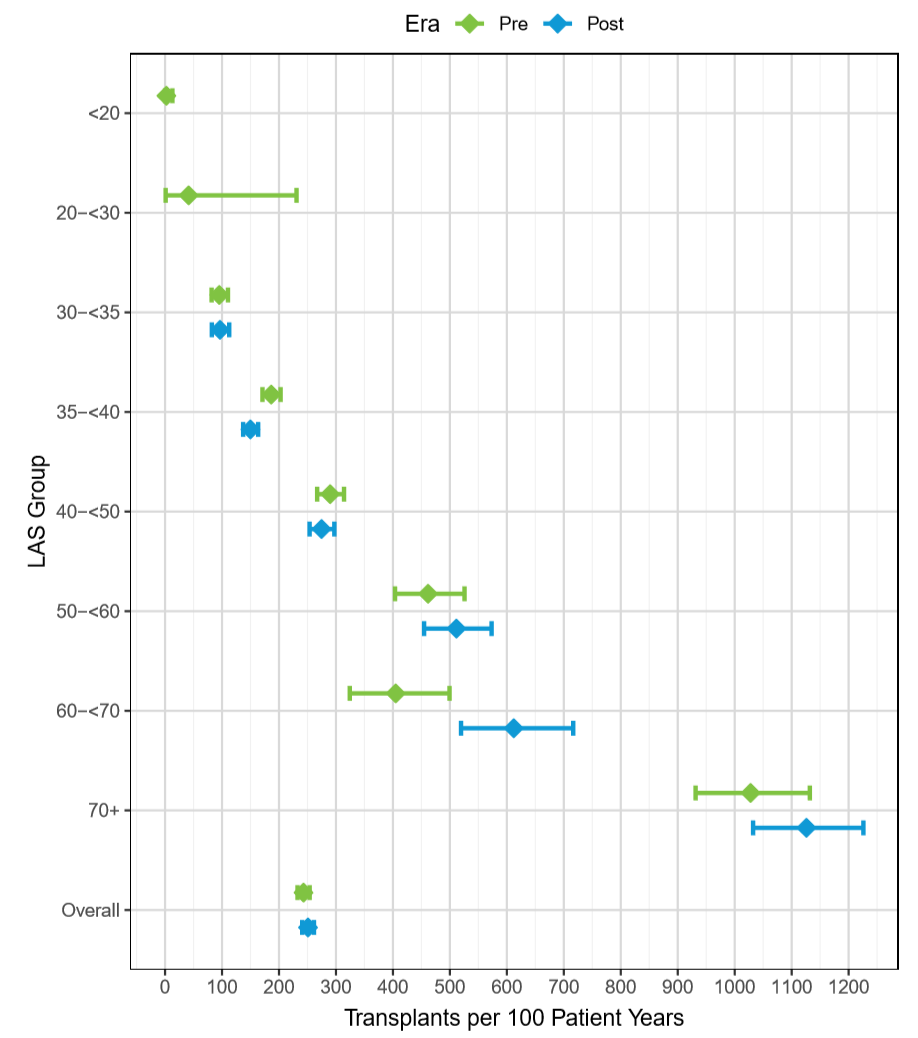Monitoring the Removal of Donation Service Area from Lung Allocation
1Research, United Network for Organ Sharing, Richmond, VA, 2Mayo Clinic, Rochester, MN, 3University of Washington, Seattle, WA
Meeting: 2020 American Transplant Congress
Abstract number: B-293
Keywords: Allocation, Lung, Lung transplantation, Outcome
Session Information
Session Name: Poster Session B: Lung: All Topics
Session Type: Poster Session
Date: Saturday, May 30, 2020
Session Time: 3:15pm-4:00pm
 Presentation Time: 3:30pm-4:00pm
Presentation Time: 3:30pm-4:00pm
Location: Virtual
*Purpose: In 2017 the Organ Procurement and Transplantation Network (OPTN) altered US lung allocation policy by replacing the donor service area (DSA) with a 250 nautical mile (NM) circle around the donor hospital as the first unit of allocation for deceased donor lungs. Lung was the first system to remove DSA from allocation.
*Methods: OPTN data on lung candidates and recipients age > 11 was analyzed pre (5/28/2016- 11/24/2017) and post policy change (11/25/2017- 5/24/2019, 18 months). Cohorts were compared to study the differences.
*Results: There was an increase in match LAS at transplant from the pre era (N=1,806) to the post era (N=1,843) (mean pre=47.22 vs. post=49.82, p < 0.001) and increase in the distance from donor hospital to transplant center (median pre=112 NM vs. post=167 NM, p<0.001) with a corresponding decrease in within DSA transplants. There were no statistically significant changes in the waiting list mortality rate; however, overall and high LAS groups (60+) saw a slight decrease. There was a significant increase in the transplant rate for the 60-70 LAS group (pre= 405 (95% CI:324, 499) vs. post= 612 (95% CI:520, 716) transplants per 100 patient years) (fig1). The 70+ LAS group also saw an increase, but it was not significant. Six-month post-transplant survival remains stable (93.5% pre vs. 93.2% post). There was no change in the discard rate when excluding DCD and perfused lungs (pre=3.58 vs. post=3.81).
*Conclusions: Replacing DSA with a 250 NM circle in lung allocation has resulted in increased distance traveled from transplant center to donor hospital to provide transplants to sickest candidates. Early post-transplant outcomes have remained stable. Currently the OPTN Thoracic Transplantation Committee is working on converting lung allocation to align with the Continuous Distribution framework.
To cite this abstract in AMA style:
Goff RR, Daly R, Lease ED. Monitoring the Removal of Donation Service Area from Lung Allocation [abstract]. Am J Transplant. 2020; 20 (suppl 3). https://atcmeetingabstracts.com/abstract/monitoring-the-removal-of-donation-service-area-from-lung-allocation/. Accessed December 18, 2025.« Back to 2020 American Transplant Congress

